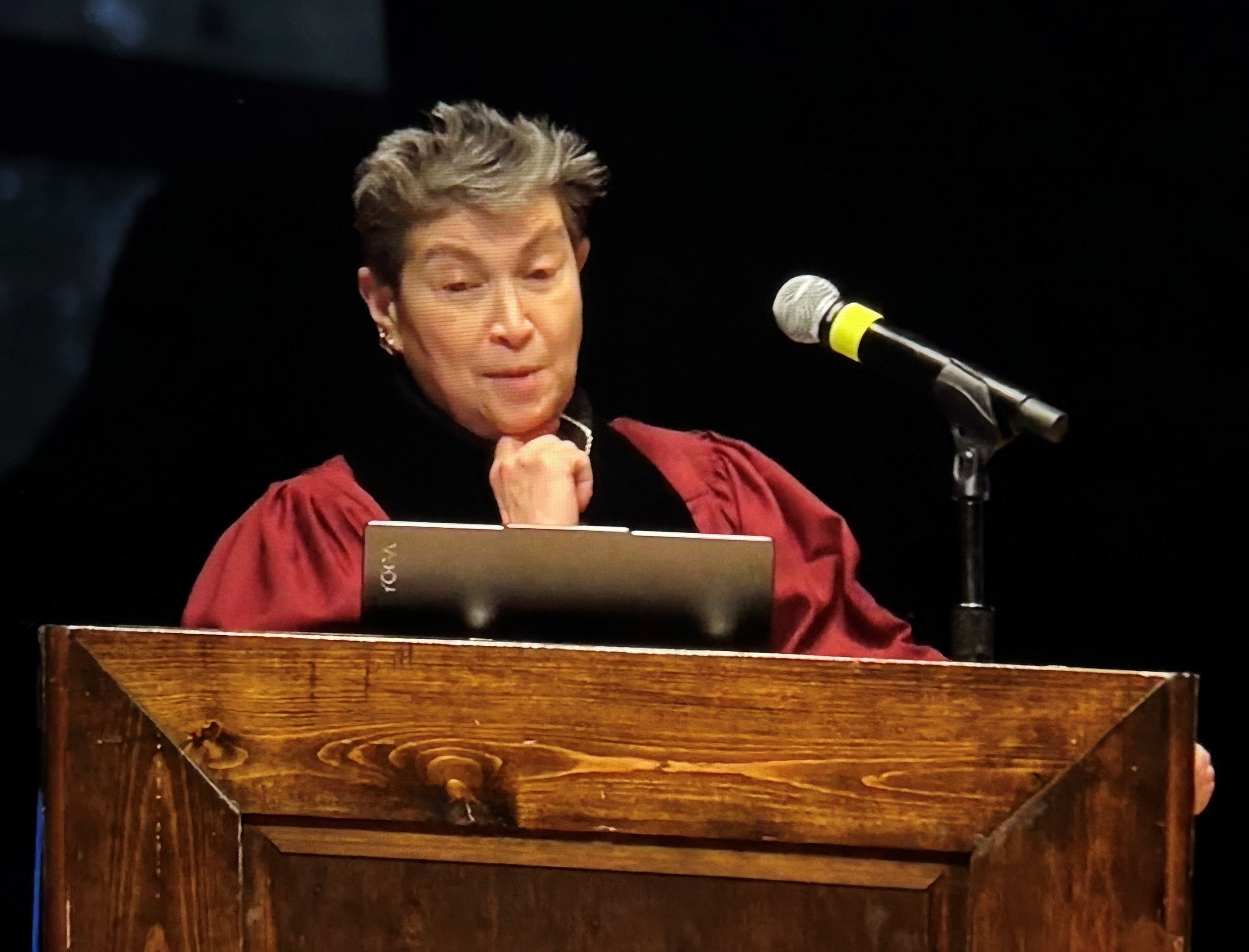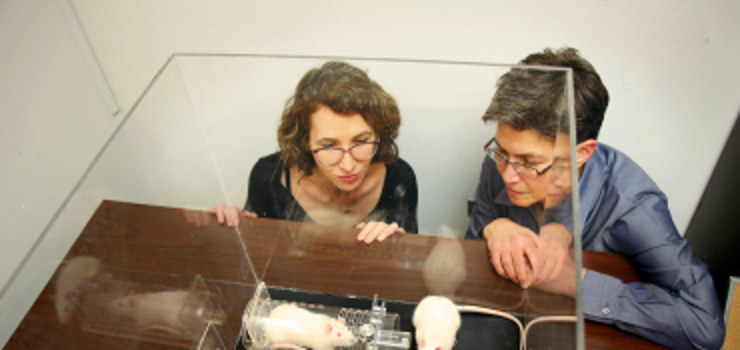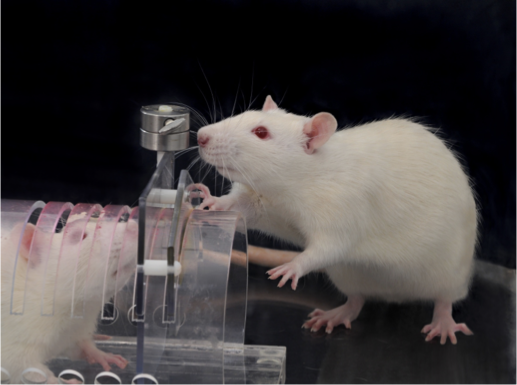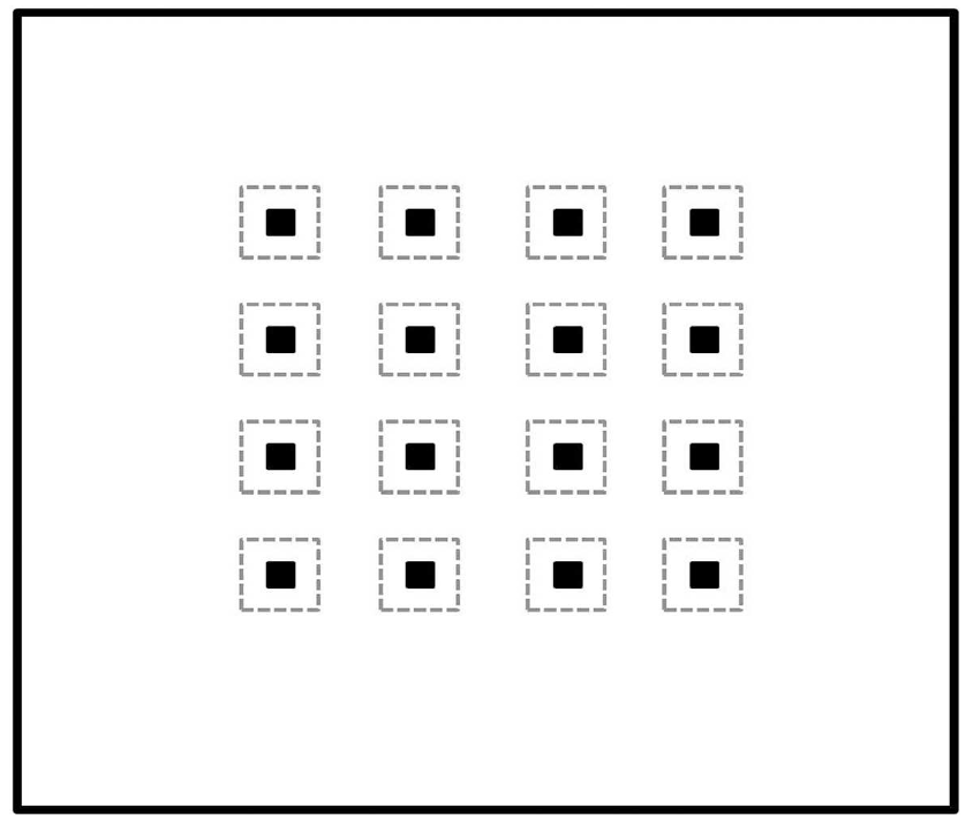Latke-Hamentaschen Debate: Take 77

Speaking at the Latke-Hamentasch Debate (LHD) is equal parts honor and duty for Jewish faculty at the University of Chicago. So, when asked to speak at the 77th LHD, I said Yes. Then I faced a big problem.
Plain and simple, I would not, could not get up in front of a mostly Jewish audience and not mention the hostages. My first plan was to dedicate my speech to the hostages. But as I wrote and rewrote my talk, rats showed me a more substantive way forward. Here it is:
“Rats amaze me over and over again with their kindness and generosity. Look at this, this, this, and then listen to this.

“It all started with Inbal Ben-Ami Bartal, who was then a graduate student in Psychology and now is on the faculty at Tel Aviv University, running her own laboratory. Inbal came up with the idea of testing whether empathy and helping have biological roots by seeing if one rat would help another rat out of a jam. We trapped one rat in a tube and made a door that only a rat on the outside could open.

“Faced with this situation, a rat could go on living his rat-life and ignore the trapped rat. Or he could go figure out how to get the trapped rat out, not an easy task in rat-land. What does the rat do? The rat helps.
“Not only do rats help, but they are quick to do so at every opportunity given. How strong is their motivation? Well, I’ll put it this way, given the chance to help and to eat chocolate, they do both, sometimes helping first, sometimes helping after eating.
“To ask the rats whether they preferred chocolate or helping, we gave them two tubes with two outward facing doors. Inside tube A was a trapped rat and inside tube B were 5 chocolate chips. As I said, rats opened for both chocolate and for the trapped rat, sometimes starting with the chocolate and other times starting with the trapped rat. Regardless of which door they opened first, they did not hog the chocolate. They shared it!! On average, the rat doing the opening ate 3 of the 5 chips and the formerly trapped and now liberated rat got 2. Not fifty-fifty but way more generous than my sister-in-law has ever been with chocolate! Sorry Susan.
“I was shocked that rats would share food. But a few years later, I learned I shouldn’t have been from an experiment that Omri Weiss, Alex Dorfman and others did in David Eilam’s laboratory at Tel Aviv University. They turned a big room, 18 by 20 feet, into a treasure hunt for rats.

“They placed 16 little boxes in a grid pattern. In each box was a piece of chocolate-y cereal. Yum for the rats. One by one, a rat, who had been deprived of food for 12 hours, went in to this room and got to run around picking up and eating the treats. Within 3-4 sessions, a rat learned this game, picking up at least 14 treats within 20 minutes.

“With the rats trained, Eilam’s team went on to the experiment phase. Groups of rats, sometimes 2, sometimes 3, were placed in the room together at the same time. Remember that they all know this gig. They all know how to get the yummy food and they know how to do it efficiently. To gain the most advantage, each rat would be expected to run around and gather as many treats as possible, hopefully beating the others to a bunch of the bait sites. If the rats did this, then, on average, each of 2 rats would get 8 of the 16 treats, each of 3 rats would collect 5 or 6 treats. All the rats would be roughly the same amount of food-satisfied. Is that what happened? No. Not at all.
“Instead of racing around individually, eating as many treats as they could reach ahead of their fellow rats, the rats stayed in a pack. They went to each bait site together. This meant that a bunch of them got no or just one or two treats while others snarfed down most of the treats. In several pairs, one rat ate all 16 treats, and his partner got none. To quote the authors, “even food-deprived rats prefer to socialize over competing for food.”
“How could it be that rats who had not eaten in 12 hours would choose socializing over eating? A rat fasting for 12 hours is at least the equivalent to us fasting for Yom Kippur. These rats were hungry. [In case you are worried, they got to eat as much as they wanted after each day’s experimental session.]
“The answer came as Eilam and his colleagues repeated the experiment. Something funny happened. Rats who snarfed on one day ate less on another day and vice versa. In the end, the total amount eaten by different rats evened out across the days. This happened without conflict. The authors called it a “peace economy,” whereby rats benefited equally over the course of time and did so without competition. They concluded that “this type of social dynamics is more relaxed, tolerant, and effective in managing conflict. It is achieved by individuals continually modifying their social relationships to attain a peaceful co-existence.”
“Hmmmm. Perhaps you can now see why I admire rats so much.
“This great experiment teaches us or reminds us that eating together means ever so much than what we eat.
“Of course, latkes are superior to hamentasch and latkes with sour cream are the pinnacle food.
“But, ultimately, it is the company we keep that flavors the food we eat. The best, the sweetest, the most savory food we could possibly enjoy is not the latke or hamentasch. It is whatever meal we will eat with the hostages when they come back to us from captivity. Not next year, not next month, now.
“Thank you.”
As I told my mother later that night, “I talked for ten minutes to set up the last few minutes to set up the last minute, which was what I cared about.” It was clear to me that the audience appreciated the opportunity to bring the hostages into the room, so to speak, to include them in our evening.
2024’s LHD was actually my second turn at debating the merits of latkes and hamantashen. [The answer is and always will be latkes as I intimated above.] Back in 2009, the bicentenial year of Darwin’s birth, I chattered on about the Beagle voyage, potatoes, and interneurons, particularly the chandelier cells of the prefrontal cortex. Yada, yada, yada.
[By the way, Darwin and Lincoln both wailed their ways into the world on February 12, 1809. How about that? A weirdness that rates with Adams (John) and Jefferson both dying on July 4, 1826 and Monroe following them five years later on Independence day of 1831.]
I recently found the Maroon’s account of the 2009 LHD. Written by Asher Klein (who according to LinkedIn is now managing director for digital at Boston’s NBC10), it was smile-inducing and whimsical in a way that feels unavailable this year. Will we return to light-hearted laughing at ourselves? Is there a future for the Latke Hamantash Debate? This question was posed to me by Amy Krause, the Executive Producer of Latke vs Hamantash, the movie now in production. Amy confided that since 7/10, a future for her movie does not even feel assured. In response to her asking about LHD’s future, I confidently predicted that the debate would go on. Although I believe this without hesitation, I don’t for a second think a future as light and bright as our past will be won easily. We will have to claw our way back there. But Jewish history shows that we survive and thrive. We will again. I don’t know how long it will take but it will happen, maybe not in my lifetime, but eventually.
And it all starts with getting the hostages back. Forward.
Categories: Mason Laboratory




Dear Peggy
<
div>I’ve turned into a painter, but my life is still influenced by your teaching ten years ago
LikeLiked by 1 person
So great to hear Mike. I love that neurobiology still lives on in your life.
LikeLike
Very well said. I really enjoyed every bit. I feel taught. I understood. Thank you.
LikeLiked by 1 person
Thank you so much, wish Bibi and his followers would act like the rats!!!
I live is Israel and most of us here, including children aged 5 , are heartbroken about the situation here and worry about our future.
My little 5 year old granddaughter insists I hold her hand tightly when we walk in the street, as she said “please hold me tightly because if someone steals me nobody can come and save me”
With hugs of hope for a better, happier, safer and healthier future
LikeLiked by 1 person
Dear Sue
Thank you so much for writing. I heap support upon your wish. Rats really show us our uncultured fundamentals and sometimes (not always) that beats all the thought and culture in the world.
How tragic to hear your granddaughter’s sage interpretation of the situation. Peace to you and all. Shabbat shalom,
Peggy 3/29/24; 29/3/24
LikeLike
thank you soooo much for caring
U r an amazing person and I always enjoy reading your articles
Be well and take care
LikeLiked by 1 person
Thank you for stating, “Jewish history shows that we survive and thrive.” The resilience and prosperity evident in Jewish history are a source of hope for me.
I started following your work many years ago, with a Coursera course on Understanding the Brain. Your love and excitement about your studies are contagious. I incorporate the knowledge and joy and enthusiasm you impart into the undergraduate psychology courses I lead.
LikeLiked by 1 person